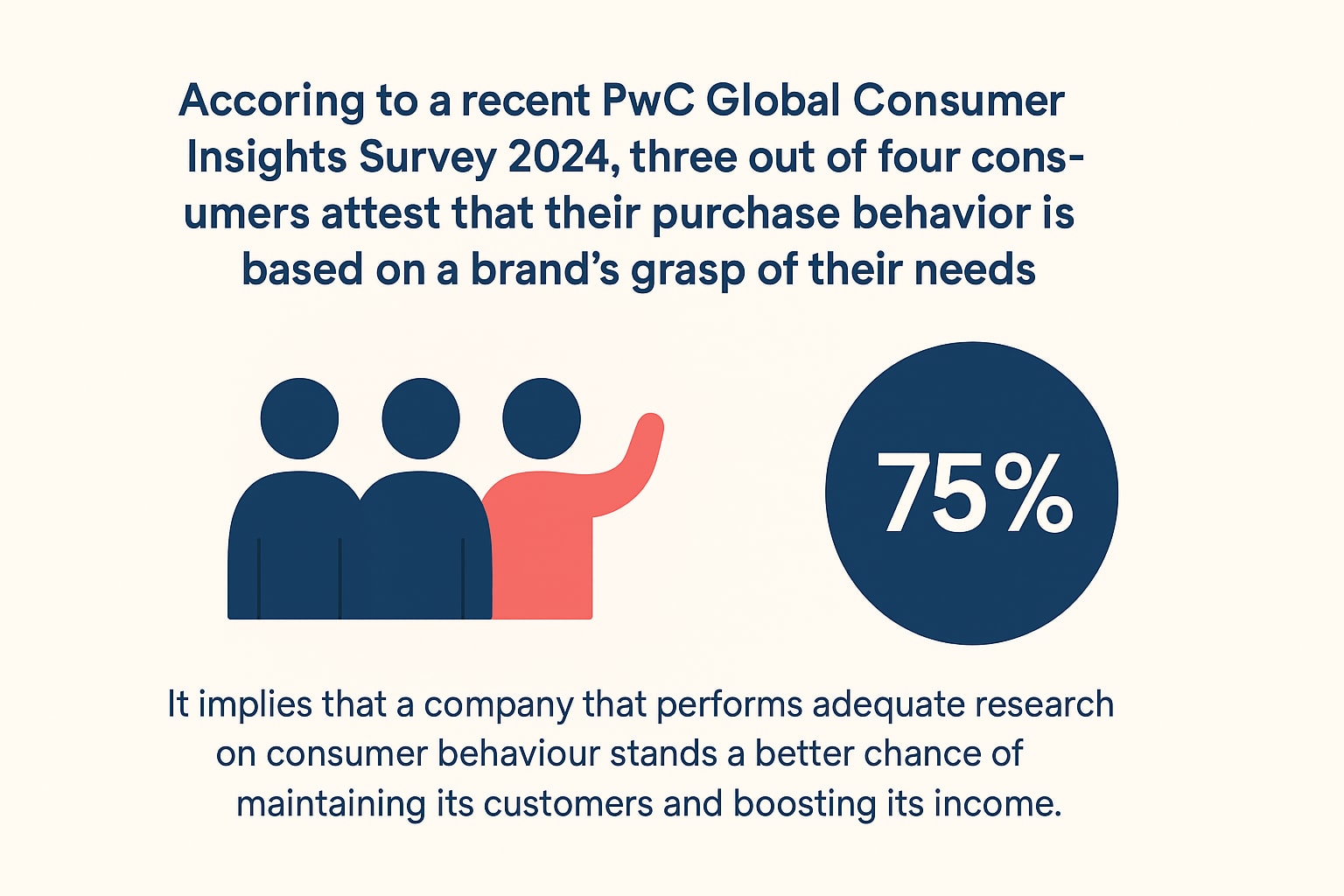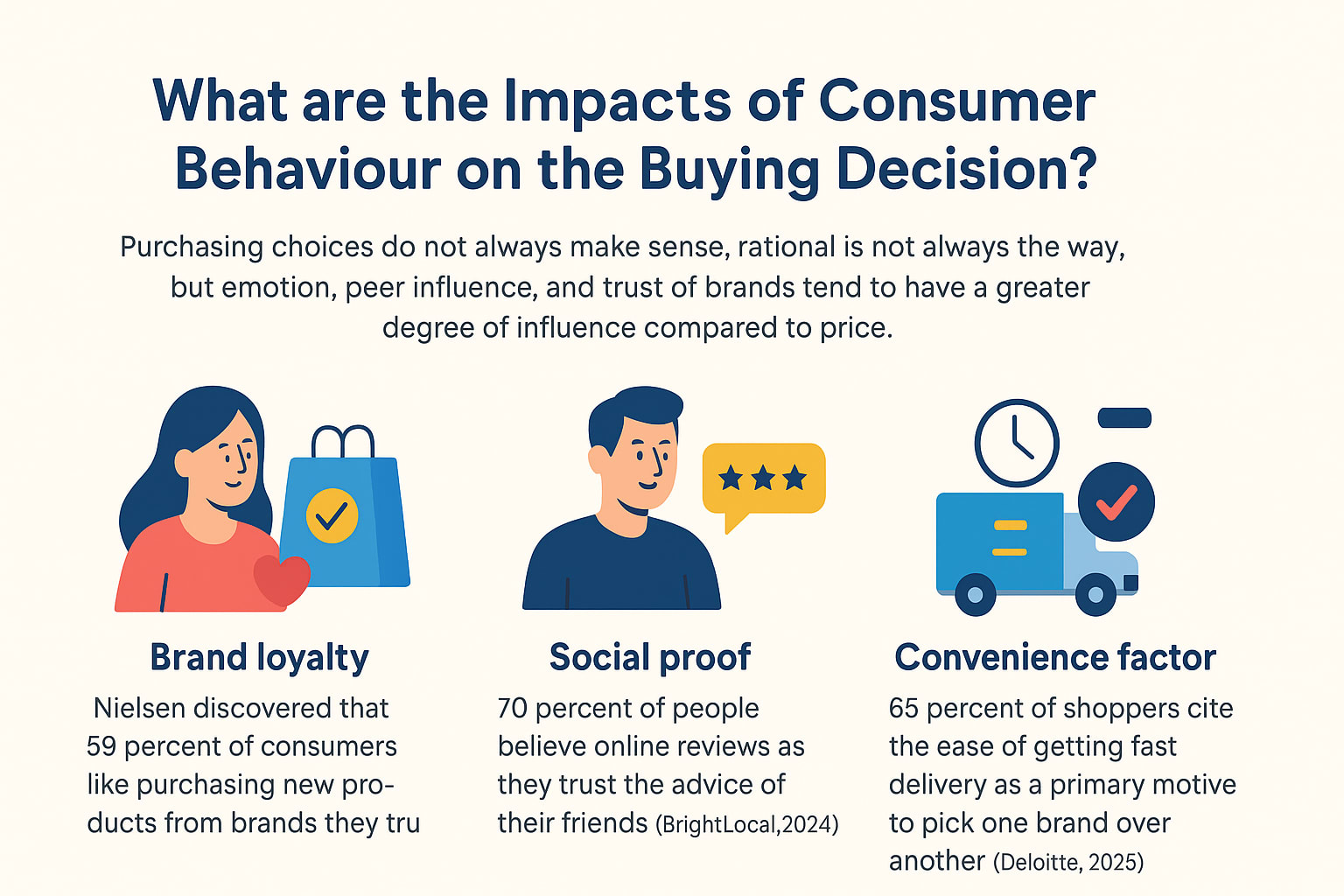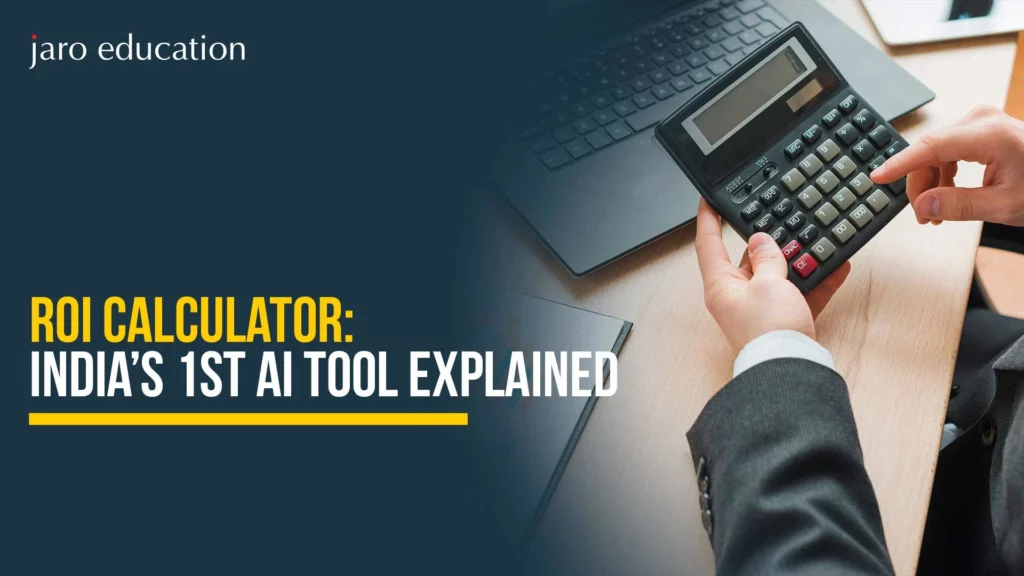Consumer Behaviour in Marketing: Definition, Concept & Factors Explained
Table of Contents

Have you ever thought about why you purchase one particular brand over another–even when they cost the same thing? This is the magic of consumer behaviour, and this is the magic ingredient in marketing that can make or break the victor in winning the customer.
It is easier to explain that consumer behaviour in marketing is an understanding of how humans think, feel, and behave before making a purchase. And it is more important than before, personalised marketing based on consumer behaviour insights is a 10-15% increase in revenue according to McKinsey (2025). In the meantime, PwC finds that 73 percent of the consumers would like companies to know their needs, but only 26 percent of them believe that brands do provide what they need.
What is Consumer Behaviour and Why Is It Important?
Consumer behaviour refers to the process through which individuals make decisions about what to give up to purchase, why they buy, and how they use products. It is not only at the point when someone clicks buy now but all the way, including the initial conception of need, an evaluation, and post-purchase feelings.
Consumer behaviour is a GPS to your customer’s mind in business. Once you understand why people do what they do, you are in a better position to develop products and services that better suit their needs as well as position marketing strengths that offer them what they want more often than not, resulting in increased sales, consumer commitment to the brand as well and an enhanced market share.
According to a recent PwC Global Consumer Insights Survey 2024, three out of four consumers attest that their purchase behaviour is based on a brand’s grasp of their needs. It implies that a company that performs adequate research on consumer behaviour stands a better chance of maintaining its customers and boosting its income.

What Encompasses Consumer Behaviour?
Consumer behaviour definition encompasses a lot of points in the process of buying, such as:
- Needs and wants – The reason why people think they need to purchase something.
- Search and evaluation – The way people contrast the various options.
- Purchase decision – What makes them buy?
- Post-purchase behaviour – What they feel after purchase (displeased, loyal, happy).
It depends not only on psychology but also on economic trends, culture, social influence, and taste. To illustrate, one of the Statista 2025 reports demonstrated that currently, 58 percent of online shoppers do research about products on social networks prior to their purchase. It implies that the businesses must be where the customers are searching.
What are the Impacts of Consumer Behaviour on the Buying Decision?
Purchasing choices do not always make sense; rationality is not always the way, but emotion, peer influence, and trust of brands tend to have a greater degree of influence compared to price. For example:

- Brand loyalty: Nielsen discovered that 59 percent of consumers like purchasing new products from brands they trust.
- Social proof: 70 percent of people believe online reviews as they trust the advice of their friends (BrightLocal, 2024).
- Convenience factor/65 percent of shoppers cite the ease of getting fast delivery as a primary motive to pick one brand over another (Deloitte 2025).
The behavioural triggers enable businesses to understand how to position their product to reflect the expectations of consumers so that customers are more likely to use their products than those of their competitors
How is Consumer Behaviour Different from Customer Behaviour?
While the terms “consumer behaviour” and “customer behaviour” are often used interchangeably, they have distinct meanings. The key difference lies in who the individual is:
- Consumer behaviour focuses on the choices, decisions, and actions of the ultimate consumer—the individual who uses or consumes the product or service.
- Customer behaviour is concerned with the individual or organization that purchases the item, regardless of whether they are the final user.
For instance, when a parent buys a toy for their child, the parent is the customer (the buyer), while the child is the consumer (the user of the toy).
The evidence of the gap is proven with the data.
Statista (2025) also discovered that 56 per cent of all products are purchased by an individual who is not the final consumer.
According to a study conducted by Harvard Business Review, the consequence of a business failing to consider the consumer behaviour and focus on customer behaviour is that they lose half or more of the future business opportunities as a result of failing to address the needs of the end user.
Nielsen indicates that in the FMCG sector, 40 percent of the purchasers make their decisions based on what the person who will be using the product prefers.
How Does Consumer Behaviour Work in Marketing?
The thing is that consumer behaviour is simply about learning how individuals decide which product to prefer over another or, in other words, why people love some campaigns, goods, and customer experiences and hate the others, and then, based on this knowledge, making it possible to produce the best marketing, products, and customer experiences ever.
Simply put, marketers observe the thoughts, emotions, and behavior of a person before, during, and after an actual purchase. They consider needs, buying habits, preferences, and emotional hot buttons so that the messages resonate with the audience.
The Marketing Consumer Behaviour Connective
Consumer behaviour can be thought of as a roadmap. With the knowledge of how the customer travels or the steps that they take in getting to use their product, marketers can ease people through the purchasing process stages.
For example:
In case the research provides us with information that customers tend to see the reviews before purchasing the goods, the marketers will be able to concentrate on the collection of positive reviews and then display them in advertisements.
Data-driven buyers’ reactions to various offers at the end of the month can inform strategic campaigns.
An Example in the Real World
Netflix is a classic case study in consumer behaviour of consumers. By monitoring what people watch, when, and what they skip, Netflix suggests shows that would keep the viewers intact. Using data-driven metrics, they can retain more than 70% of subscribers monthly, a level of retention most banks and credit card issuers can only hope for.
Top Business Takeaway
Consumer behaviour isn’t just something you study in marketing just to sell more – it’s about trust and long-term engagement. Once a brand knows why customers buy, it can advertise better, spend less of its advertising dollars on waste, and keep the customers coming back.
Why Does Understanding Consumer Behaviour Matter for Businesses?
Comprehending consumer behaviour is on the same level as a cheat sheet in acquiring customers. It informs you on what people desire and how they make decisions, and it makes them come back. In the absence of this knowledge, businesses can only make guesses, and in the modern competitive business environment, making guesses is costly.
Companies can change their level of performance by understanding the behaviour of their customers:
Develop products that will meet actual needs rather than using the money to build on duds.
More targeted marketing campaigns to save on ad spend.
Increase customer satisfaction and prompt them to buy again.
Business Impact with the support of data
- Increased sales – Consumer behaviour insights that are actively used by the company seem to have a 2× greater probability of increasing sales every year (PwC Global Consumer Insights 2024).
- Greater loyalty – HBR research discovered that customer preference knowledge will raise retention by up to 30 per cent.
Less marketing waste: 20-30 percent of the cost of acquisition can go down through targeted campaigns where consumer data helps. (Deloitte research)
What Are the Main Factors Influencing Consumer Behaviour?
It is not a random behaviour of consumers since it is influenced by a combination of individual, social, cultural, and psychological determinants. Knowledge about these enables the business to determine why individuals buy one product and not the other and how they arrive at their decision to purchase.
It is like a recipe with the different factors being the ingredients, and the decision is the result of the process, or rather, the dish. Make a slight modification in the ingredients, and the decision may change as well.
1. Personal Factors
These are personal and they include:
- Age and Life stage- A 15-year-old who is buying sneakers needs an entirely different product than a 60-year-old retiree who is purchasing walking shoes.
- Essentially, lifestyle- Lifestyle- oriented customers can accept good snacks in the place of fast food.
- Level of income- The Budget can make a decision on whether one is purchasing a luxury vehicle or a used one.
It is seen in the example of a report by Statista in 2025, which states that 68 percent of Gen Z consumers favor brands that fit their ideals in terms of lifestyle, e.g., sustainability or inclusivity.
2. Cultural Factors
Culture profoundly influences consumer behavior by shaping values, habits, and perceptions of what is acceptable to purchase. This encompasses:
National Culture: Consumer preferences and market success can vary significantly between countries, as exemplified by the differences between India and Japan.
Subcultures: Groups unified by shared interests, such as gamers, vegans, or sneaker enthusiasts, often exert a strong influence on each other’s purchasing decisions.
Customs, Events, and Festivals: Cultural traditions play a significant role in driving sales. For instance, in India, Diwali celebrations are traditionally linked to increased shopping, leading to a surge in sales.
According to Nielsen India (2024), festival seasons in India contribute between 30% and 35% of the country’s annual retail sales.
3. Social Factors
Individuals are significantly influenced by their social environment:
Family: Family members, particularly parents, often shape consumption choices for items like food, clothing, and other products, and this influence can be reciprocal.
Friends & Peers: Recommendations from friends often carry more weight and trust than traditional advertisements.
Social Media Influencers: Figures on platforms like Instagram, TikTok, and YouTube can sway the purchasing decisions of millions.
BrightLocal (2024) reported that approximately 70% of consumers view online reviews with the same level of trust as personal recommendations.
4. Psychological Factors
The brain makes a very significant contribution to purchasing decisions:
- Motivation: Something makes an individual purchase something.
- Perception – What an individual views as a brand may determine whether or not he or she believes it.
- Attitude and beliefs research is based on the fact that positive experiences with a brand build loyalty, whereas a highly negative one pushes customers away.
- Interest: Research done at Harvard demonstrates that customers with emotional connections are 52 percent more valuable to brands compared to merely satisfied customers.
How Has Consumer Behaviour Changed in the Digital Age?
The era of digital has changed everything relating to how people buy, decide, and relate to brands. The customer journey has become quicker, more personal, and more interconnected as one scrolls through a phone and purchases with a single touch.
Technology has altered not only the place where people go shopping but also the reasons and the ways they select particular products. Social media, instant delivery, and artificial intelligence-based recommendations have provided a new standard that businesses need to comply with to remain relevant.
Which are the most important changes when it comes to consumer behaviour after COVID-19?
COVID-19 did not bring changes; it only enhanced changes that were already occurring:
Observing explosive expansion in Internet-based retailing, Statista (2025) has published a report that states that global e-commerce revenues grew by a staggering 50 percent between 2020 and 2024, reaching above 6.3 trillion US dollars.
- Health & safety priorities – This mindset made the customers increasingly aware of health and safety, which increased the requests for contactless payments and safe delivery.
- Local and sustainable purchasing – Deloitte purports that only 57 percent of the audience will purchase from local businesses that contribute to the community.
Example: Apps that enable grocery delivery, such as BigBasket and Instacart, also experienced significant growth in the overall markets during the years of the pandemic as they addressed convenience and safety demands.
Conclusion
What is required is to understand the consumer behaviour in the pursuit of creating focused products and marketing campaigns that reach people. Through understanding what consumer behaviour is, its definition, concept of consumer behaviour, and factors affecting consumer behaviour, businesses would make more intelligent decisions and establish better relations with customers. Living in a competitive world, consumer behaviour must be mastered in marketing since, in reality, there is no choice, especially when it comes to long-term success.
Frequently Asked Questions
What is consumer behaviour, and why is it important in marketing?
Consumer behaviour is the study of how people choose, use, and evaluate products or services. In marketing, it helps businesses understand customer needs, design better products, and create effective campaigns that increase sales and loyalty.
What is the definition of consumer behaviour in simple words?
The definition of consumer behaviour is the process by which individuals decide what to buy, how to use it, and how they feel about the purchase. It includes psychological, cultural, social, and personal factors.
What is the concept of consumer behaviour in marketing?
The concept of consumer behaviour in marketing is about understanding the decision-making process of buyers so brands can align products, prices, promotions, and distribution with customer expectations.
What are the main factors influencing consumer behaviour?
The main factors influencing consumer behaviour include personal factors (age, income, lifestyle), social factors (family, friends, influencers), cultural factors (traditions, values), and psychological factors (motivation, perception, beliefs).
How can businesses use consumer behaviour to improve sales?
Businesses can use consumer behaviour insights to personalise offers, improve product design, set competitive prices, and run targeted marketing campaigns — all of which boost sales and customer loyalty.







![Top-Career-Opportunities-After-PhD-in-India-[2025]](https://jaro-website.s3.ap-south-1.amazonaws.com/2025/10/Top-Career-Opportunities-After-PhD-in-India-2025-1024x576.webp)










